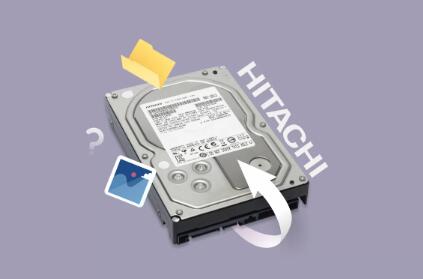Losing important files from a hard disk can be a frustrating experience, whether due to accidental deletion, formatting, corruption, or system crashes. Fortunately, in most cases, deleted files can still be recovered with the right approach.
When you delete a file, it isn’t immediately erased from your hard disk. Instead, the operating system marks the space occupied by the file as available for new data. This means that until new data overwrites the deleted file, there is a chance to recover it. The sooner you act, the higher the chances of a successful recovery.

Methods to Restore Deleted Files from a Hard Disk
1. Check the Recycle Bin (Windows) or Trash (Mac)
Before attempting any advanced recovery methods, check the Recycle Bin (Windows) or Trash (Mac) to see if the deleted file is still there.
Windows: Open the Recycle Bin, locate the file, right-click, and select “Restore.”
Mac: Open Trash, find the file, right-click, and choose “Put Back.”
2. Use File History or Backup
If you have File History enabled on Windows or Time Machine on Mac, you can restore previous versions of your files.
Windows File History:
Open the folder where the deleted file was located.
Right-click and select “Restore previous versions.”
Choose the version you want and restore it.
Mac Time Machine:
Open Time Machine from the menu bar.
Navigate to the folder where the file was located.
Select the file and click “Restore.”
3. Use System Restore (Windows)
System Restore allows you to revert your system to a previous state, potentially recovering lost files.
Type “System Restore” in the Windows search bar and select “Create a restore point.”
Click “System Restore” and follow the prompts.
Choose a restore point before the file deletion occurred and restore the system.
4. Use Data Recovery Software
Losing important files from your hard disk can be distressing, but Panda Assistant provides a reliable solution to recover your deleted data quickly and efficiently. Whether files were lost due to accidental deletion, formatting, corruption, or system crashes, Panda Assistant’s advanced recovery tools can help retrieve them.
Key Features of Panda Assistant for Hard Disk Recovery:
Quick & Deep Scan: Locate recently deleted files with a quick scan or perform a deep scan for thorough recovery.
Supports All File Types: Recover documents, images, videos, emails, and other file formats.
User-Friendly Interface: Simple steps ensure easy recovery, even for non-technical users.
Preview Before Recovery: View recoverable files before restoring them.
Works on All Hard Drives: Supports internal and external HDDs, SSDs, and USB drives.
How to Recover Files Using Panda Assistant:
Download & Install: Install Panda Assistant on a separate drive to prevent data overwriting.
Scan the Hard Disk: Choose the affected drive and start scanning for lost files.
Preview & Select Files: Check the scan results and select the files to restore.
Recover & Save: Save the recovered files to a secure location.
5. Use Command Prompt (Windows)
If files have been deleted due to corruption, the Command Prompt can help.
Steps:
Open Command Prompt as an administrator.
Type chkdsk X: /f (replace X with the drive letter) and press Enter.
Type attrib -h -r -s /s /d X:*.* and press Enter.
Check if the files have been recovered.
6. Restore from Cloud Backup
If you use cloud storage services like Google Drive, OneDrive, or Dropbox, check for backup copies of your files.
Google Drive: Go to Google Drive > Trash > Restore.
OneDrive: Go to OneDrive > Recycle Bin > Restore.
Dropbox: Go to Dropbox > Deleted files > Restore.
7. Consult a Data Recovery Specialist
If all else fails and the data is critical, professional data recovery services can help. They use advanced tools to retrieve data from physically damaged or severely corrupted drives.
Preventing Future Data Loss
To avoid data loss in the future, consider the following:
Regularly back up your files to an external hard drive or cloud storage.
Enable File History (Windows) or Time Machine (Mac) for automatic backups.
Avoid using the hard drive after accidental deletion to prevent overwriting data.
Use a reliable antivirus to protect against malware that may cause file loss.
About us and this blog
Panda Assistant is built on the latest data recovery algorithms, ensuring that no file is too damaged, too lost, or too corrupted to be recovered.
Request a free quote
We believe that data recovery shouldn’t be a daunting task. That’s why we’ve designed Panda Assistant to be as easy to use as it is powerful. With a few clicks, you can initiate a scan, preview recoverable files, and restore your data all within a matter of minutes.
Subscribe to our newsletter!
More from our blog
See all postsRecent Posts
- Repair word document (free service 2025) 2025-04-03
- Repair excel document (Free download 2025) 2025-04-03
- How to repair word document? 2025-04-03










